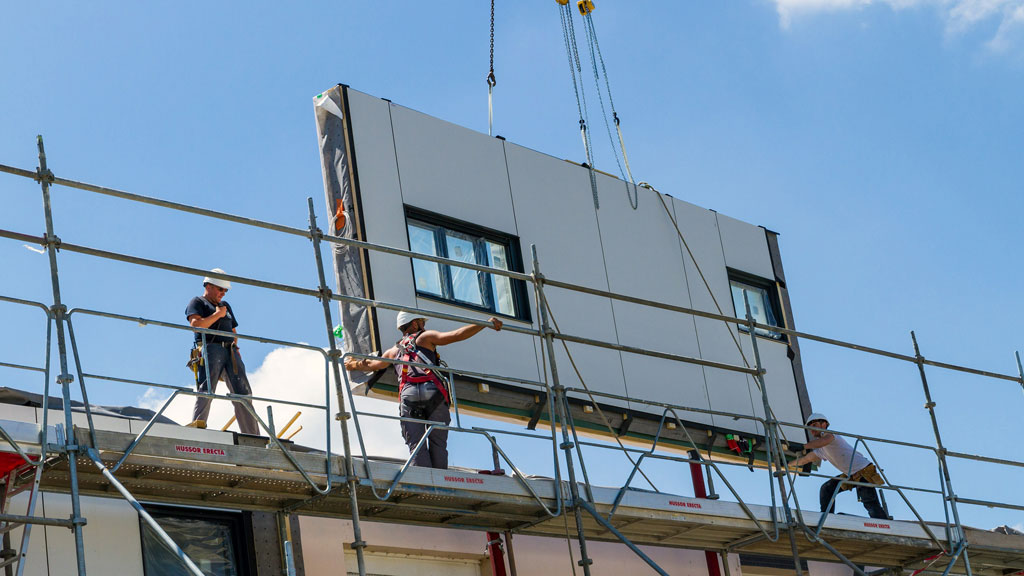To achieve Canada’s greenhouse gas (GHG) reduction commitments, widespread energy efficiency retrofits must be made to millions of buildings across the country.
However, it will take 142 years to retrofit all low-rise residential structures and 71 years to change-out all commercial stock at the current pace, according to a new report.
The report, titled Canada’s Climate Retrofit Mission, was produced by Efficiency Canada, a policy advocacy and research organization at Carleton University’s Sustainable Energy Research Centre in Ottawa.
A main message is that the situation requires deployment of zero-carbon solutions at an unprecedented scale, speed and level of performance, and envisions Canada doing a mass retrofit of all buildings within a generation to eliminate fossil fuels, while freeing up enough electricity to power 10 million electric vehicles.
The cost of the retrofit work would be $580 to $972 billion, which could be amortized over 15 or 30 years.
Brendan Haley, lead author of the report and policy director at Efficiency Canada, says to meet climate goals there must be increases in scale and decreases in cost for building retrofits — much like what’s happened in wind, solar and battery technologies — as well as a mission-oriented approach to the transformation.
“The major point is that we need to invite multiple bottom-up solutions,” he says. “We do not yet have a perfect model, and workable retrofit models are likely to differ by building type and region. We highlight various innovation pathways that we think should be explored, such as greater application of digital solutions, aggregation of projects across both space and time, and integrated project management.”
“But the main point is to develop a policy that enables us to continue to explore new retrofit solutions and to evaluate their effectiveness based on mission performance criteria.”
The report contends that current policies are focused on short-term results, and markets are segmented and unco-ordinated, and the missing sauce for a booming retrofit market is an innovation-oriented approach.
The report outlines a policy framework focused on triggering economies of scale and innovations to reduce costs, increase speed and enhance value. For example, on-the-ground market development teams would co-ordinate the upgrading of several buildings at once and also introduce new retrofit models.
Efficiency Canada maintains the report is timely because expanding energy retrofits is clearly on the federal government’s agenda and it is time to think about how to change the current delivery models.
The report was inspired by some of the big picture thinking that has been happening with the pandemic and the fact Efficiency Canada would like to see a similar mission orientation brought to the climate emergency. It discusses the need to trigger a take-off in the scale of building retrofits.
“Transitions in other industries has seen such a take-off,” notes Haley, “and the major shift should be realistic if we consider that the current performance is more the result of policy and market environments that hold back economies of scale, learning and dynamic efficiencies than any physical barrier.”
Presently, he notes, building retrofits are evaluated in a static way using cost-benefit analysis, in both governments and utilities, and building owners must navigate a confusing array of contractors and products.
“Under these constraints you can’t expect the retrofit process to change dramatically.”
He maintains it is time for a new evolution as there is a political opening and dramatic need to eliminate all emissions.“To do that, we need to think about this as a mission that will welcome innovations and trigger transformations, rather than something that can only be justified under the constraints of today’s costs and benefits.”
There have been dramatic cost reductions in sectors like solar energy because policies targeted price reductions and economies of scale, says Haley, and “for building retrofits, we need to take a similar approach.”
He suggests adopting a retrofit model used in Europe called Energiesprong, which uses new technologies such as prefabricated facades, insulated rooftops with solar panels, smart heating, and ventilation and cooling installations to get a building to net zero — which means it generates the total amount of energy required for its heating, hot water and electrical appliances.
The report indicates Canada’s policy system already has many of the building blocks to implement a mission-oriented approach and calls for an independent and innovation-focused organization to guide the mission, coupled with on-the-ground teams exploring ways to reshape how retrofit markets function.
Haley suggests a governance system be set up where a national organization has substantial funds and guides the mission.
The on-the-ground work of coming up with new retrofit models and testing them through large-scale projects should be done by market development teams consisting of experts across the country that can work with building owners, manufacturers and policymakers, and follow the Energiesrpong model, he says.
“They should have no material interest in contracts or project delivery, yet play an orchestration role to reshape the way typical contracts work, so markets are reshaped to meet zero-emission performance goals.”











Recent Comments